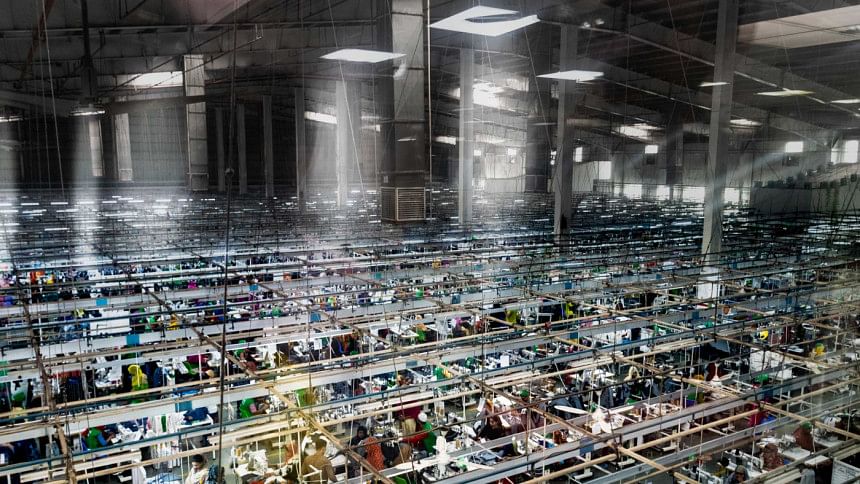Sustainability’s biggest sell? It’s profitable

Sustainability should not be a hard sell. And yet, in our industry, so many garment makers continue to look at it as a financial burden—a potential drain for their businesses. At its heart, however, sustainability is about future-proofing your business. It is also about good housekeeping. Confused? Please, bear with me.
Growing up, many of us were taught the value of taking care of precious resources. Don't leave the lights on; don't waste electricity; separate household waste streams into recyclables; don't throw things away when they can be used again. These thrift techniques are passed down from one generation to another. To use an English phrase, "If you look after the pennies, the pounds will look after themselves."
Most smart business owners take these lessons to their trade. In fact, the most successful business owners will often walk around the factory floors and spot instances of waste, whether it be a leaking tap or a piece of equipment that has been left running unnecessarily. These people might be successful business owners—they could be multimillionaires—but they hate seeing resources being wasted.
The flip side of this is that the owner who loses sight of these small things, their business begins splurging money on unnecessary luxuries. Too much fat and poor use of resources will catch up with any business eventually—especially one where margins are tight, such as garment manufacture.
I said sustainability is about good housekeeping. To this end, it represents a financial opportunity. How so?
A few examples spring to mind from the ready-made garment (RMG) industry. The first is a recent study that found that RMG factories in Bangladesh have huge potential to harvest rainwater for use in production. The study, conducted by WaterAid and the RAiN Forum, suggests that some factories are already meeting up to 60 percent of their production requirements using harvested rainwater. The report found that many factories have the potential to harvest 10,000 cubic metres of rainwater, while larger factories could harvest anywhere from 10,000 to 30,000 cubic metres every year. Obviously, factory owners have to make an initial investment in water harvesting technology, but after that, the savings soon become apparent (and the investment is relatively small).
But I hear people say: factories don't pay for water, so why does it matter? Actually, I do believe that, one day, our industry will begin to put a large monetary price on water, especially for industrial use. When that day comes, the factories that harvest rainwater will be well placed financially. Until then, owners will be able to sleep well with the knowledge that they know they are doing the right thing for the planet.
Secondly, many businesses in fashion are now looking to partner with factories that are actively working on sustainable operations. Thus, there is a financial return on these kinds of investments in terms of securing and maintaining business relations with international apparel brands.
The second example of sustainability having a financial incentive is in terms of energy and chemical savings in apparel production. As well as using excess water, clothing production often wastes energy and chemicals, which is a prime example of bad housekeeping. Many businesses in our industry waste huge amounts of money each year on excessive use of resources. It's remarkable, isn't it, that at a time when we should all be thinking about how we can save resources, many factory owners are inadvertently wasting them?
It need not be this way. A series of programmes funded by organisations such as the World Bank over the years have shown that huge amounts can be saved in energy, chemicals (and water) by investing in more sustainable and efficient methods of production.
Often, the steps that factory owners need to take are relatively simple and would be regarded as low hanging fruit where sustainability is concerned. Lots of small steps can often have a large net effect. They might include retrofits and the replacement of old production technology with more efficient equipment. To offer some perspective, one study found that energy consumption in Vietnam's textile sector alone could decrease nationwide by 30 percent with technology upgrades and improved efficiency. Thirty percent! Vietnam has a similarly sized textile industry like Bangladesh, so the comparison is relevant.
What are we waiting for, then? Well, there are plenty of things holding our industry back from making these changes. Arguably the biggest is our mindset and attitude. Like I said before, too many owners still see sustainability as a financial burden. Perhaps, sustainability needs to be marketed differently. Perhaps, those selling it need to start with the question: Is your manufacturing operation haemorrhaging money? Is it spending too much on energy or textile chemicals? Is it failing to maximise operational efficiencies and having an excess of waste, harming profit margins?
So many businesses are failing in these areas. They think they have a sustainability problem, but in reality, they have a financial problem.
In the modern world, the two are, in many cases, two sides of the same coin.
Mostafiz Uddin is the managing director of Denim Expert Limited. He is also the founder and CEO of Bangladesh Denim Expo and Bangladesh Apparel Exchange (BAE).

 For all latest news, follow The Daily Star's Google News channel.
For all latest news, follow The Daily Star's Google News channel. 



Comments